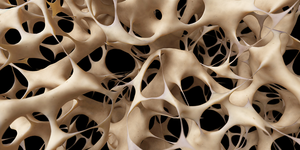Improved analytics is helping to ensure that the active pharmaceutical ingredient (API) quality attributes of monoclonal antibodies (MAbs) are identified as early as possible, determining both the desirable and undesirable characteristics, as pointed out by Ms Gail Dutton in a Genetic Engineering & Biotechnology News Feature Article on 15 February 2010 (see also How to tackle overcapacity in monoclonal antibody production, Improving monoclonal antibody production - antibody-drug conjugate technology and Modern monoclonal antibody production - focus on quality by design, timelines, cost)
Monoclonal antibodies modelling - predictive analytics
Biosimilars/News
|
Posted 09/03/2010
 0
Post your comment
0
Post your comment

Dr Thomas Rohrer, Senior Director ADC and biochemical technologies at Lonza, told Ms Dutton that using protein aggregations as an example of an undesirable property that adds complexity to the purification process, Lonza has developed a software tool to accurately predict the aggregation propensity of proteins, called AggreSolve.
“The tool can be used to screen product candidates or provide a rational basis for redesigning the primary sequence of the antibody, or for changing the conditions in the antibody modification and conjugation reaction to make aggregation less likely,” Dr Rohrer said. The AggreSolve technology platform can extract information from the primary sequence by calculating solvent accessibility, structural preferences, aggregation propensity, and potential intermolecular interaction. That information makes it possible to predict potential stability and aggregation issues that may occur during antibody-drug-conjugate process development. Lonza has also developed predictive scale-down models at milligram and gram scales to simulate the antibody modification and conjugation reactions. These models help reduce process-development costs and provide assurance that the large-scale process will meet the quality attributes necessary to prove clinical efficacy. Lonza currently has a small-scale model of an ImmunoGen process that is predictive of the large-scale product quality and overall process yield. Therefore, it is useful as a process-validation tool when investigating critical process parameters. Lonza is also improving the gene-expression system, methods used to ensure clonality, and screening techniques. The single biggest issue has been the time taken to generate a clonally derived cell line suitable for product manufacturing. In the case of the GS Gene-Expression System used at Lonza, the selection of cells is sufficiently stringent to avoid the need for additional time-consuming rounds of amplification. Additionally, a suspension-adapted variant of CHO cells is used, which eliminates the time taken to adapt cells to a chemically defined animal-component-free suspension culture. The use of automated cloning systems and modified screening procedures has further reduced the time taken to generate cell lines from 60 to 30 weeks. In terms of reducing the cost of goods, Lonza has increased both capacity and scale. By advancing gene-expression technology and the design of its fed-batch systems, routine expression typically in the grams per litre range has occasionally exceeded 10 grams per litre. Another approach is to reduce the need to manufacture large quantities of MAbs. When antibodies used for oncology therapies require receptor binding of compliment fixation to elicit apoptosis, the potency of an antibody can be reduced 100-fold by conjugating it to a potent cytotoxic drug, Dr Rohrer said.
Reference:
Gail Dutton. Trends in Monoclonal Antibody Production - With Capacity Issues Resolved, Firms Direct Attention to Quality, Timelines, and Cost. Genetic Engineering & Biotechnology News Vol. 30, No. 4. 2010 February 15.
Source: Genetic Engineering & Biotechnology News
Research
Reaching ESG goals in pharmaceutical development
What is the future for the US biosimilar interchangeability designation
General
Samsung Bioepis wins Pyzchiva case; Regeneron patent rulings threaten foreign biosimilars
Chinese biosimilars go global: growth, partnerships, and challenges
EMA recommends approval for four biosimilars targeting three therapies

Biosimilars/News Posted 10/10/2025
FDA approves first interchangeable rapid-acting insulin biosimilar, Kirsty

Biosimilars/News Posted 03/10/2025
The best selling biotechnology drugs of 2008: the next biosimilars targets








Post your comment